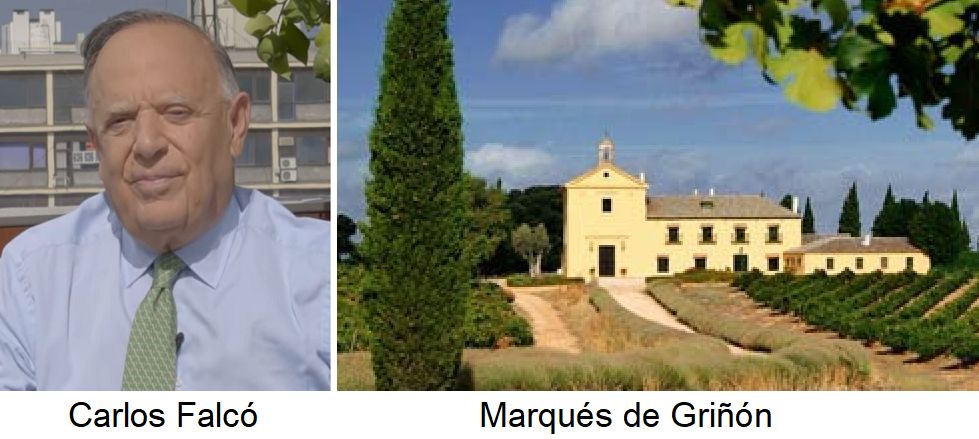The winery is located in the municipality of Malpica de Tajo, 50 kilometres from Toledo in the Spanish region of Castilla-La Mancha. The "Finca Casadevacas" estate has been owned by the family since 1292. The total estate covers 1,400 hectares. Carlos Falcó y Fernández de Córdova (1937-2020) is considered one of the most important Spanish winegrowing pioneers. He was the 5th Marqués de Griñón, the name of this Spanish aristocratic title referring to the town of Griñón in the province of Madrid. He studied at the French Lyceum in Madrid and later studied agricultural engineering at the University of Leuven (Brussels) and agricultural economics at the University of California in Davis. The Marqués was regarded as a living legend ever since wine critic Robert Parker gave his wines his highest rating in 1995. After his death, he was succeeded by his second daughter Tamara Falcó.

Transformation into a winery
In 1974, Marqués and winemaker Julio López Mourelle began growing grapes in the extremely dry region using the most modern methods. The vineyards cover 52 hectares on clay and limestone soils at 490 metres above sea level and are divided into three separate plots. The French varieties Cabernet Sauvignon, Chardonnay, Petit Verdot and Syrah, which were not yet authorised at the time, were planted. At the time, the vineyards were one of the first in Europe to use artificial drip irrigation. Electronic sensors are used to check the soil moisture. The Australian viticulture expert Dr Richard Smart (*1945) introduced the canopy management system he had developed. The two famous oenologists Michel Rolland (*1947) and Émile Peynaud (1912-2004) acted as advisors. The modern, partially underground, air-conditioned wine cellar was built in 1989 in a building dating back to the 18th century.
Dominio de Valdepusa
The winery was granted a special regulation in the 1970s. The wines were allowed to bear the designation "Vino de Mesa de Toledo" with a vintage, although there is no DO area called Toledo. In 2003, the "Dominio de Valdepusa" sub-area (site) was classified as the first newly introduced Vino de Pago area, the highest Spanish wine quality level above DOCa. The wines are matured in around 1,000 French oak barrels in a climate-controlled barrique cellar. The top product is the red wine cuvée "Eméritus", which has become a cult wine. The grapes are carefully harvested by hand and rigorously selected. The wine is blended from Cabernet Sauvignon (over 80%), Petit Verdot and Syrah, fermented in stainless steel tanks and matured in barriques for 24 months.
Other activities
Olives are also cultivated and olive oil is marketed. Wine activities were also expanded to other Spanish DO areas from the end of the 1980s. These are Vinos de Madrid with the red wine "El Rincón", Rueda (Castile-León), Rioja in a joint venture with the two wineries Berberana and Lagunilla and Ribera del Duero (Castile-León) under the name Bodegas Durius. The property also includes the Marqués de Griñón winery in the Argentinian region of Mendoza.
Voices of our members

I have great respect for the scope and quality of the wein.plus encyclopaedia. It is a unique place to go for crisp, sound information on terms from the world of wine.
Dr. Edgar Müller
Dozent, Önologe und Weinbauberater, Bad Kreuznach